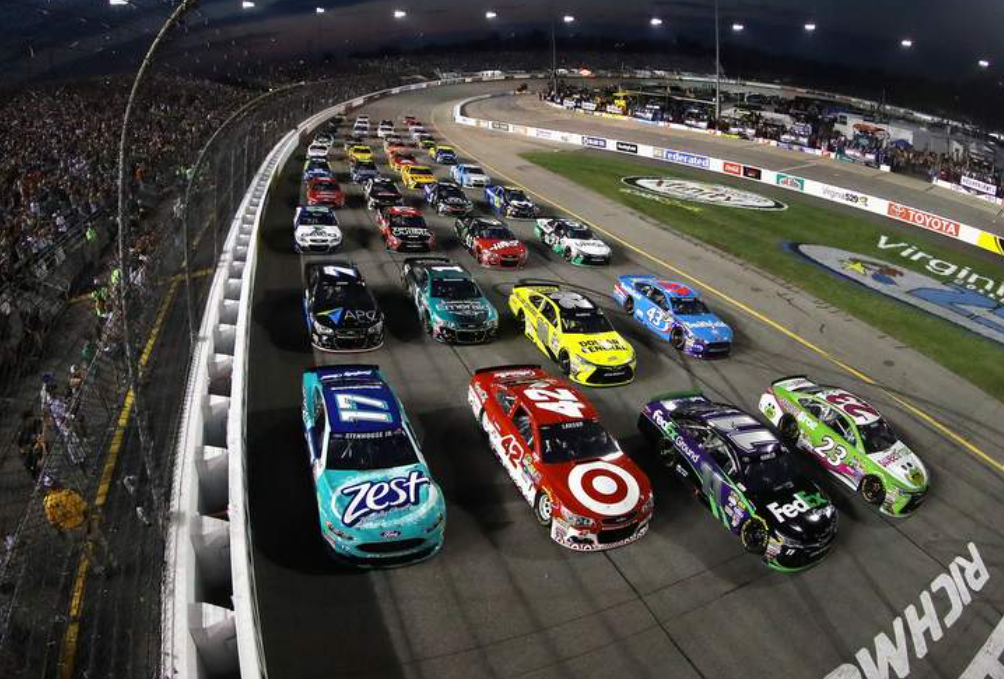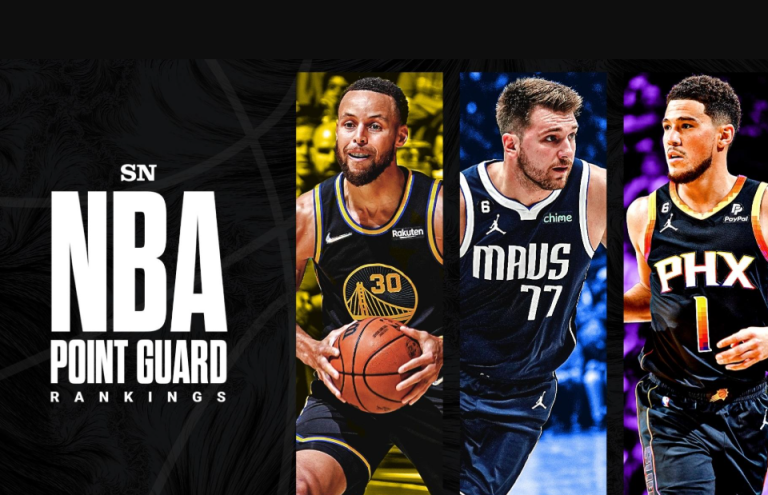How to bet on NASCAR in the USA
High-octane motorsport combines thrilling competition with strategic wagering opportunities across America. Understanding how to bet on NASCAR requires knowledge of odds, race dynamics, and legal frameworks governing sports wagering in the United States.
NASCAR betting in the USA
The American wagering landscape transformed after the 2018 Supreme Court decision enabling states to legalize sports gambling. Stock car racing emerged as a major wagering market, attracting millions in stakes annually across licensed platforms with year-round competition.
🏁 NASCAR betting growth: US NASCAR betting handle reached approximately $950 million-$1.1 billion in 2024, with Daytona 500 alone generating $120-150 million in wagers across regulated markets. The sport’s 36-race Cup Series schedule provides consistent betting action February through November, creating sustained engagement compared to single-event sports. NASCAR’s statistical transparency—qualifying speeds, practice times, pit stop efficiency—enables data-driven analysis that sophisticated bettors increasingly exploit for 6-9% edges over recreational markets.
Why NASCAR betting is popular in the USA
The sport’s deep American roots and continuous race action create unique wagering opportunities. The 36-race Cup Series schedule ensures year-round engagement, while predictable factors like track history and driver statistics enable informed decisions. American bettors appreciate transparent nascar odds with comprehensive markets for winners, finishes, and matchups. The sport’s technical nature rewards research into driver form analysis and track surface conditions, making it ideal for analytical bettors.
Legal considerations and licensing
Sports wagering legality varies by state, with over 30 states legalizing gambling under individual regulatory frameworks. Licensed operators obtain state gaming commission permits and comply with strict oversight requirements protecting consumer interests.
Age and geographic restrictions
All legal sportsbooks enforce a 21-year minimum age requirement. Geolocation technology verifies users are physically within authorized state boundaries. Interstate wagering remains prohibited—accounts registered in one state cannot typically operate when traveling to different jurisdictions.
⚖️ Legal framework: Over 30 states plus Washington D.C. offer legal NASCAR betting through licensed operators, including major racing markets like North Carolina (home to most Cup Series teams), Tennessee, Virginia, Pennsylvania, New Jersey, Nevada, Colorado, Illinois, Michigan, Indiana, Arizona, New York, Louisiana, Maryland, Ohio, Massachusetts, and Kentucky. State gaming commissions enforce strict regulations requiring operators to segregate customer funds, undergo quarterly audits, and maintain $1-5 million surety bonds protecting bettors.
Overview of licensed sportsbooks
Licensed sportsbooks operate under regulatory frameworks protecting consumer funds and ensuring fair practices. BetWhale stands among these operators, offering comprehensive motorsport markets with competitive nascar odds today and secure USD transactions. Licensed platforms provide legal recourse, guaranteed payouts, and responsible gaming support.
How to bet on sports in the USA
 The wagering process involves selecting a licensed platform, creating an account, funding your bankroll, and navigating market types. American bettors benefit from competitive bonuses, diverse payment methods, and sophisticated mobile applications.
The wagering process involves selecting a licensed platform, creating an account, funding your bankroll, and navigating market types. American bettors benefit from competitive bonuses, diverse payment methods, and sophisticated mobile applications.
Sportsbooks vs bookmakers: Understanding the difference
In American terminology, “sportsbook” refers to licensed operators offering wagering services. These function as both platform and odds compiler, setting lines and accepting wagers directly. Licensed sportsbooks operate with transparent pricing, displaying vigorish embedded in odds while employing professional oddsmakers who analyze racing data.
How to register and deposit funds
Registration requires personal information including name, birth date, Social Security number (last four digits), and address. Verification procedures involve uploading government-issued identification to confirm age and identity, ensuring security against fraud.
💡 Expert insight: “Proper account verification protects both bettor and sportsbook, ensuring secure environments while facilitating faster withdrawals.” — Gaming Compliance Expert
Payment methods – USD, crypto, and eWallets
Modern sportsbooks accept debit cards, bank transfers, and wire transfers in USD with typical $10-$20 minimums. Cryptocurrency (Bitcoin, Ethereum) offers faster processing and enhanced privacy, with $20 minimum equivalents. eWallet services like PayPal, Skrill, and Venmo provide instant deposits around $10, popular among casual bettors.
Mobile betting options
Mobile wagering dominates with over 80% of stakes placed through smartphones. Licensed sportsbooks offer features like live streaming, push notifications for nascar odds this week, and one-touch interfaces. Both iOS and Android support dedicated apps, while mobile browsers provide alternative access with continuous GPS verification.
📱 Mobile advantage: Mobile betting accounts for 82-88% of total NASCAR betting handle, with peak usage during live race action when bettors make in-play wagers based on real-time track position and strategy developments. Top sportsbook apps update odds every 15-30 seconds during races, providing crucial information edges for bettors monitoring multiple platforms simultaneously. Mobile interfaces enable quick line shopping across 3-4 sportsbooks, capturing best available odds that improve long-term returns by 5-8% annually.
Overview of all types of bets and their features ✅💡❌
Stock car racing offers diverse markets beyond simple winners, creating strategic wagering opportunities throughout race weekends. Understanding each type’s mechanics, risk profile, and returns enables informed decision-making.
Common NASCAR bets
Motorsport wagering encompasses several standard markets, each offering unique characteristics and strategic considerations for diversified approaches.
Moneyline / winner bets
Moneyline bets select which driver wins the race. Race odds typically range from +300 for favorites to +20000 for extreme underdogs in 36-40 car fields. A $100 bet at +800 returns $800 profit plus stake.
✅ Advantages
Simple and widely available, straightforward market understanding
❌ Disadvantages
Long odds make favorites expensive, large fields reduce probability
Prop bets
Proposition bets cover specific occurrences like top-3, top-5, top-10 finishes, fastest lap, first retirement, and manufacturer winner. These offer shortened odds versus race winners while maintaining engagement throughout events.
💡 Tip: Top-10 finish props provide consistent returns with favorites priced +100 to +300, delivering reasonable payouts with higher probability.
Futures bets
Futures involve extended-period outcomes like Cup Series champion or playoff advancement. Championship odds adjust throughout seasons, with early favorites at +400 to +1200, while long-shots reach +10000.
✅ Advantages
Long-term season engagement, large potential payouts
❌ Disadvantages
Capital locked extended periods, injuries impact outcomes
Head-to-head matchups
Head-to-head markets match two drivers—whoever finishes higher wins regardless of position. Odds typically range -120 to +100 for balanced pairings, eliminating field size factors and focusing on direct competition.
How odds work in NASCAR
Understanding odds formats and implied probabilities forms value wagering foundations. American sportsbooks predominantly use American odds with optional format toggles.
Decimal, fractional, and American odds explained
American odds use positive/negative numbers relative to $100. Negative odds (-150) show amount needed to win $100, while positive (+300) shows profit from $100 stake. Decimal odds represent total return including stake. Fractional odds express profit relative to stake.
| Odds format | Example | $100 bet returns | Calculation |
|---|---|---|---|
| American | +500 | $600 total | $500 profit + $100 stake |
| American | -200 | $150 total | $50 profit + $100 stake |
| Decimal | 6.00 | $600 total | $100 × 6.00 |
| Decimal | 1.50 | $150 total | $100 × 1.50 |
| Fractional | 5/1 | $600 total | ($100 × 5) + $100 |
| Fractional | 1/2 | $150 total | ($100 × 0.5) + $100 |
Risk vs reward: Understanding stakes and payouts
Wagering strategy balances returns against probability and risk tolerance. Conservative bettors favor shorter odds with higher probability, while aggressive bettors target long-shots for occasional large payouts.
Comparison of NASCAR bet types
| Bet type | Typical odds range | Win probability | Risk level | Popularity |
|---|---|---|---|---|
| Race winner | +300 to +10000 | Low (3-5%) | High ❌ | ⭐⭐⭐⭐⭐ |
| Top-3 finish | +150 to +600 | Medium (8-15%) | Medium 💡 | ⭐⭐⭐⭐ |
| Top-10 finish | -120 to +250 | High (25-40%) | Low ✅ | ⭐⭐⭐⭐⭐ |
| Head-to-head | -130 to +110 | Medium (45-55%) | Low ✅ | ⭐⭐⭐⭐ |
| Championship futures | +400 to +20000 | Very low (3-10%) | Very high ❌ | ⭐⭐⭐ |
| Fastest lap | +800 to +5000 | Low (3-8%) | High ❌ | ⭐⭐ |
💡 Expert recommendation: Beginners should start with top-10 finishes or head-to-head matchups, building experience before attempting lower-probability winner wagers.
✅ Advantages of diversified wagering
Spreads risk across markets
Maintains race engagement
Balances conservative/aggressive positions
Reduces emotional impact
❌ Disadvantages of poor selection
Chasing long-shots depletes bankroll
Ignoring probability creates losses
Over-betting favorites yields minimal returns
Lack of diversification increases variance
Mistakes to avoid when betting on sports in the USA
Common errors cost American bettors millions annually, stemming from emotional decisions and inadequate preparation. Recognizing pitfalls enables protective strategies improving long-term profitability when you bet on NASCAR regularly.
Common NASCAR betting errors
The sport’s unique characteristics create specific traps for inexperienced bettors, from mechanical variability to strategic pit decisions.
Betting without research
Wagering based solely on driver popularity ignores critical outcome factors. Successful wagering analyzes track history, qualifying performance, practice speeds, and team updates. Nascar picks should incorporate qualifying performance analysis, as starting position significantly impacts winning probability—front-row starters at short tracks win over 40% versus dramatically reduced chances starting beyond 20th. Research includes monitoring pit crew efficiency, as superior pit strategy translates to strong finishes.
Chasing losses
Loss-chasing represents the most destructive behavior—increasing stakes attempting to recover previous losses. This spiral accelerates losing streaks through emotional decisions replacing rational analysis.
❌ Loss-chasing behaviors:
- Doubling bets after losses
- Betting entire bankroll on one race
- Taking extreme long-shots desperately
- Ignoring predetermined limits
Professional bettors view losses as inevitable variance, maintaining consistent stakes regardless of results with individual wagers never exceeding 2-3% of bankroll.
Ignoring odds movement
Race odds fluctuate from posting through event start, reflecting new information and wagering volume. Sharp bettors monitor movement identifying value opportunities or concerning shifts indicating undisclosed information. Significant shortening might signal insider knowledge about superior equipment, while lengthening despite positive perception could indicate mechanical concerns.
How to protect your bankroll
Bankroll management separates sustainable bettors from boom-bust cycles. Implementing disciplined controls ensures longevity regardless of short-term variance.
Setting betting limits
Establish clear limits defining maximum daily, weekly, and per-race amounts as bankroll percentages. Conservative strategies allocate 1-2% per bet, aggressive approaches reach 5% for high-confidence plays. Never exceed 10% on single bets.
💡 Practical limit structure:
- Daily maximum: 10% of bankroll
- Single bet maximum: 3% of bankroll
- Weekly maximum: 25% of bankroll
- Monthly review periods
Licensed sportsbooks offer self-imposed limits in account settings, providing automated protection against impulsive decisions.
Avoiding emotional bets
Emotional wagering occurs when personal biases override objective analysis—backing favorite drivers despite unfavorable odds, revenge stakes after losses, or celebration wagers after wins. Successful bettors maintain detachment, treating wagering as mathematical exercises with predetermined criteria eliminating subjective decisions.
Guide to analyzing statistics before placing a bet
Statistical analysis transforms motorsport wagering from gambling into informed decision-making. The sport’s extensive data availability enables sophisticated performance modeling that helps bettors bet on NASCAR with calculated precision rather than pure chance.
Key NASCAR stats to monitor
Comprehensive analysis incorporates multiple statistical categories revealing different competitive aspects. Professional bettors develop systematic data collection approaches identifying patterns casual observers miss.
Driver performance and history
 Driver form analysis examines recent results, average finishes, and consistency over rolling timeframes. Track-specific performance history provides more predictive value than overall season statistics—drivers with multiple victories at particular venues maintain advantages through accumulated data and setup knowledge.
Driver form analysis examines recent results, average finishes, and consistency over rolling timeframes. Track-specific performance history provides more predictive value than overall season statistics—drivers with multiple victories at particular venues maintain advantages through accumulated data and setup knowledge.
Lap time trends during practice reveal true speed independent of race-day incidents. Ten-lap averages eliminate flukes, providing reliable indicators. Drivers consistently posting fast practice laps demonstrate performance that might not reflect in final results due to mechanical failures or strategic decisions.
Track conditions and weather
Track surface conditions evolve throughout weekends, with rubber buildup and temperature changes affecting grip and tire wear. New asphalt favors horsepower, while worn surfaces reward mechanical grip and driver skill managing degraded tires.
Weather forecasts impact strategy dramatically regarding tire selection and fuel calculations. Temperature variations between practice and race time necessitate setup adjustments that some teams execute better, creating wagering value during unpredictable weather.
Team performance and pit strategy
Manufacturer performance patterns emerge through analysis, with certain brands dominating specific track types. Pit crew efficiency directly impacts outcomes—elite crews gain positions through faster stops, with average times varying 0.5-2.0 seconds between teams, translating to multiple positions over full races.
Strategic pit decisions separate championship teams from mid-field competitors. Analyzing historical strategy at specific tracks reveals tendencies toward aggressive/conservative fuel management, early/late entries, and two-tire versus four-tire changes under caution.
Using data to find value bets
Value wagering identifies situations where to bet on NASCAR odds underestimate actual winning probability. This requires calculating true odds through modeling, then comparing against sportsbook offerings. When calculated probability exceeds implied probability from posted odds, value exists.
💡 Expert insight: “Sustainable wagering success lies not in picking winners, but identifying situations where markets have mispriced probability.” — Professional NASCAR Handicapper
Statistical modeling incorporates race predictions USA from multiple sources, weighting factors by predictive relevance. Advanced models include 20+ variables using regression analysis identifying non-obvious correlations.
🏁 Statistical modeling advantage: Professional NASCAR handicappers build models incorporating 20-35 variables including practice speeds, qualifying results, track history, pit crew rankings, recent form, weather conditions, and manufacturer performance. These regression models identify correlations casual bettors miss—for example, drivers with top-5 practice speeds AND top-10 qualifying positions win 18-24% of races versus 8-12% for drivers meeting only one criterion, creating exploitable betting edges when odds don’t reflect combined probability advantages.
Live and in-play betting analysis
Live markets update continuously during races, creating dynamic opportunities. Overtaking statistics reveal which drivers demonstrate superior racecraft, providing comeback potential insight when early incidents create unfavorable positions.
Monitoring progression against pre-race expectations identifies value. Stage racing creates additional wagering windows between segments. Analyzing stage points alongside finishing position forecasts enables strategic wagering on drivers positioned for strong overall finishes despite missing stage wins.
💡 Live betting strategy: Stage racing creates 2-3 distinct betting windows per race where odds reset based on stage points earned and positions lost through pit strategy. Drivers finishing stages 6th-12th (earning 1-5 stage points) while running competitive lap times often see their odds lengthen 15-25% despite strong underlying performance, creating value opportunities before inevitable advancement in later stages when strategy normalizes and true speed determines positions.
How to bet on NASCAR races – step by step
Successful motorsport wagering follows systematic approaches maximizing preparation time while maintaining race-day flexibility. Understanding how to bet on NASCAR strategically requires this structured process to ensure thorough analysis without overlooking critical factors.
Pre-race bets
Pre-race wagering begins days before events as initial odds appear and practice sessions provide early indicators. This extended period allows comprehensive research without time pressure.
🎯 Pre-race timing advantage: NASCAR odds typically release 5-7 days before race weekends, with sharpest bettors placing 60-70% of their action within 48 hours of line release to capture best value before public money moves markets. Practice sessions Thursday-Friday provide crucial data—drivers consistently posting top-5 practice speeds see their odds shorten 10-20% by Saturday qualifying, meaning early bettors capture superior prices on drivers whose true speed hasn’t yet been priced into odds by casual market participants.
Qualifying bets
Qualifying sessions determine starting positions through single-lap trials, creating markets focused purely on speed. These eliminate race-day variables like strategy and incidents, rewarding teams with raw performance advantages.
Qualifying performance wagering suits statistical analysis, as lap speed correlates with horsepower, aerodynamics, and driver comfort. Historical qualifying data identifies specialists consistently outperforming in qualifying trim. Odds range +200 for slight favorites to +5000 for underdogs.
🏆 Qualifying specialists: Certain drivers consistently outperform in qualifying versus race results due to one-lap speed optimization. Analyzing drivers’ qualifying-to-race performance differential reveals specialists who qualify 5-8 positions better than they finish on average—targeting these drivers for qualifying bets at +300 to +800 while fading them in race winner markets creates profitable divergence strategy exploiting their specific strength while avoiding their race-day weaknesses.
Early season futures
Championship odds tracking begins during offseason, with initial odds reflecting previous performance and team changes. Early futures capture maximum value before public perception adjusts. Preseason championship odds for contenders range +400 to +1200, while developing drivers reach +5000.
💰 Futures value timing: Championship futures odds offer maximum value in preseason (January-February) before Daytona 500, when odds reflect previous year performance without accounting for offseason improvements, team changes, or new car development. Drivers switching to elite teams or benefiting from technical upgrades often see their odds shorten 30-50% after first 3-4 races demonstrate improved competitiveness, meaning early futures bets capture this value before market adjusts to new realities.
In-play bets
In-play wagering capitalizes on race developments, adjusting positions as new information emerges. This dynamic approach requires constant monitoring and quick decisions.
⚡ In-play opportunities: Live NASCAR betting creates 15-25 distinct wagering opportunities per race through caution flags (averaging 6-8 per race), stage conclusions (2 per race), pit strategy windows, and leader changes. Professional live bettors focus on identifying drivers with superior lap times running mid-pack due to early pit strategy or minor incidents—these drivers often see their odds lengthen 25-40% despite maintaining speed advantage that will inevitably translate to position advancement once race strategy normalizes in final 50-75 laps.
Live odds tracking
Live odds fluctuate based on current positions, incidents, caution flags, and remaining distance. Successful live wagering anticipates movements before markets adjust, such as backing strong cars running mid-pack before inevitable advancement. Monitoring multiple sportsbooks identifies discrepancies enabling brief arbitrage opportunities.
Strategic wagers during the race
Race progression creates multiple wagering windows corresponding to strategic phases. Caution flags present optimal entry points as odds stabilize before restart chaos. Wagering between cautions on restart specialists capitalizes on predictable short-term advantages. Stage conclusions offer similar opportunities as stage points distribute and strategies reset.
Special event bets
The schedule includes signature events with enhanced wagering interest and unique characteristics creating specialized opportunities.
🏁 Special event dynamics: Crown Jewel races (Daytona 500, Coca-Cola 600, Southern 500, Brickyard 400) generate 2-3x normal betting handle with casual bettors heavily influencing odds through name-recognition betting. This public money inflates popular drivers’ odds 12-18% beyond fair value while undervaluing consistent performers lacking mainstream recognition, creating systematic value opportunities on drivers with strong track history but lower public profiles who perform reliably at these marquee venues.
Playoff races
Playoff races carry heightened intensity with championship implications affecting driver aggression. Teams in secure positions race conservatively, while bubble drivers take excessive risks. These behavioral changes create value understanding playoff mathematics and driver motivations.
Championship bets
The championship race concludes with four drivers competing directly for the title. This unique format creates a four-driver market where championship odds reflect qualifying position and historical Phoenix performance. Many sportsbooks offer special markets including margin of victory, fastest lap, and first-to-lead props specific to championship scenarios.
Tools and resources for NASCAR betting
Leveraging professional-grade tools elevates analysis from casual observation to systematic evaluation. Modern bettors access sophisticated resources previously available only to professional handicappers.
🔧 Professional toolkit: Serious NASCAR bettors invest $50-150 monthly in professional-grade tools including premium statistics platforms (detailed practice/qualifying data), odds comparison services (monitoring 8-12 sportsbooks simultaneously), weather modeling specific to track locations, and social media monitoring tracking team communications. These tools generate 4-8% ROI improvements over baseline handicapping, paying for themselves within 2-3 races for bettors wagering $200+ weekly through superior information access and faster odds movement identification.
Best NASCAR betting sites in the USA
Selecting sportsbooks involves evaluating factors beyond basic odds quality. BetWhale distinguishes itself through comprehensive motorsport markets, competitive nascar odds, and user-friendly mobile interfaces optimized for race-day wagering.
Licensed platforms provide security advantages including regulated fund segregation, guaranteed payouts, and responsible gaming participation. BetWhale maintains multi-state licenses offering consistent service across jurisdictions. Evaluate features like live streaming, cash-out options, same-game parlays, and rapid race-day odds updates.
Betting calculators and odds converters
Mathematical tools eliminate calculation errors and enable quick scenario modeling. Odds converters translate between formats instantly, while calculators determine required stakes for target profits. Implied probability calculators convert odds into percentages, facilitating value identification. Expected value calculators quantify whether bets offer positive long-term expectations.
📊 Essential calculators: Professional bettors use calculators daily for implied probability conversion (determining if +650 odds offering 13.3% implied probability represent value when analysis suggests 18% true probability), expected value calculation (quantifying long-term profit expectations), Kelly Criterion stake sizing (determining optimal wager amounts based on edge and bankroll), and arbitrage identification (finding risk-free profit opportunities across multiple sportsbooks when combined odds guarantee positive return regardless of outcome).
Statistics platforms and analytics tools
Professional platforms aggregate comprehensive data including practice speeds, historical results, pit times, and manufacturer performance. Racing-Reference.info provides free historical data, while premium platforms offer advanced filtering. Weather services deliver track-specific forecasts crucial for setup decisions. Social media monitoring tracks driver communications revealing mechanical updates or strategy hints. Mastering how to bet on NASCAR effectively means utilizing these information sources for competitive advantages.
💡 Bet and play with BetWhale: BetWhale offers American bettors comprehensive motorsport markets with competitive odds, secure USD transactions, and mobile-optimized platforms. Licensed operations ensure compliance while providing extensive live wagering options. Registration takes minutes with multiple funding methods including cryptocurrency, eWallets, and traditional banking. Welcome promotions enhance initial bankrolls, while ongoing bonuses benefit existing customers. The platform’s motorsport wagering tips section provides expert analysis and picks informing staking decisions.
FAQ
How to start betting on NASCAR in the USA?
Register at a licensed platform, verify identity, and deposit funds. Begin with simple top-finish wagers while studying race statistics.
What are the most popular types of bets in NASCAR?
Winner picks dominate, followed by positional finishes and driver matchups. Championship futures and special props offer additional variety.
Can I bet on NASCAR with cryptocurrency?
Yes, platforms accept Bitcoin and Ethereum with instant deposits and 24-48 hour withdrawals, typically requiring $20 minimums.
What are the most common mistakes that beginners make in NASCAR betting?
Backing popular names over performance data and increasing stakes after losses are the most damaging errors.
Where can I find reliable statistics to analyze before betting?
Official racing sites and Racing-Reference provide comprehensive data. Specialized analytics platforms offer deeper competitive insights.









